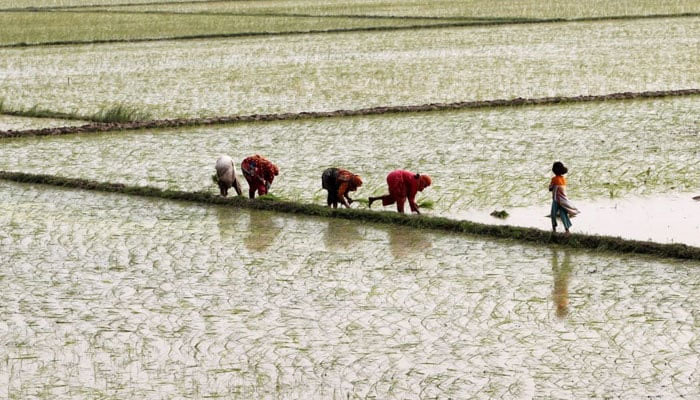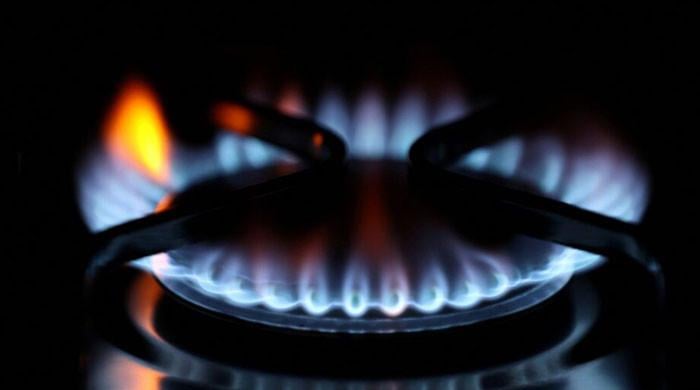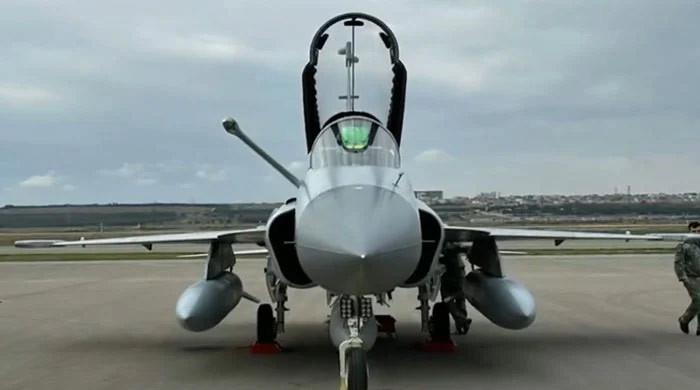Crops at risk as IRSA warns of up to 30% water shortage in Kharif season
Water distribution under three-tier formula to continue despite Sindh's opposition as matter pending before CCI
April 03, 2024

- Cotton, rice seedlings in Sindh to be affected due to water shortage.
- Sindh opposes water distribution under the three-tier formula.
- IRSA to form committee to prepare report on Tarbela, Mangla dams.
ISLAMABAD: Multiple cash crops are at risk after the Indus River Authority (IRSA) warned that the country will face a water shortage of up to 30% in the Kharif season due to Water and Power Development Authority (Wapda’s) failure to do away with Tarbela and Mangla Dams’ constraints, The News reported on Wednesday.
According to IRSA Advisory Committee (IAC), the 30% water shortage in the early Kharif season will be reduced to 7% later on. However, the situation may be exacerbated in the early Kharif season with adverse effects on cotton and rice seedlings in Sindh if Wapda fails to address the limitations of Tarbela Dam's output.
The development comes after IRSA Chairman Abdul Hameed Mengal presided over the IAC session, attended by IRSA’s five members, secretaries of provincial irrigation departments of the four provinces along with other officials, which met to approve the Kharif 2024-anticipated Water Availability Criteria from April to September 2024 in Islamabad.
"During early Kharif from April 1 to June 10, there will be no water available for below Kotri water releases which are essential to stop the sea intrusion into Sindh’s agricultural land," an official of the provincial Irrigation Department told the publication.
The official further added that around 3.5 million acres of agricultural land in Sindh has already been eroded since 1956 during the sea intrusion because of the non-availability of below Kotri water releases,”
During Tuesday's meeting, Sindh opposed the water distribution under the three-tier formula and called for the implementation of the Water Accord 1991 and its para-2 for 4-5 MAF (million acres feet) water.
However, IRSA maintained that the issue was pending with the CCI (Council of Common Interests) and therefore the three-tier formula is currently being used for water distribution between the provinces.
It is pertinent to know that the country is likely to have 99.41 MAF of water during the whole Kharif season. However, the country will have 23.55 MAF in early Kharif and 75.85 MAF in late Kharif from June 11 to the end of September. In canals, Punjab will have 31.13 MAF of water, Sindh 28.81 MAF followed by Balochistan with its share of 2.85 MAF and Khyber Pakhtunkhwa is to have 0.28 MAF in its canals.
Both Sindh and Punjab have blamed each other for maximum water losses in their respective territories with the former stressing the water losses to be around 40%, whereas the latter said the losses would be 20%.
Nevertheless, IAC decided that system losses should be considered at 20% till the joint discharge measurement after which the issue will be decided accordingly.
Despite Punjab's opposition to this, the forum unanimously agreed on the constituting a committee comprising Member IRSA (Punjab) & Member IRSA (Sindh) along with nominated chief engineers from the PID (Power Irrigation Department) Punjab and PID Sindh to physically review and monitor the sites of both the dams and prepare a report for resolution of the operational constraints.
Furthermore, it was agreed upon that Punjab and Sindh would activate their respective Discharge Observation Cells (DOCs) for data reporting at different locations. Punjab SDOs will be stationed at Guddu, Sukkur & Kotri Barrages in Sindh, while Sindh SDOs will monitor the discharges at Jinnah H/W, Chashma Barrage, Taunsa H/W & Panjnad H/W in Punjab.











